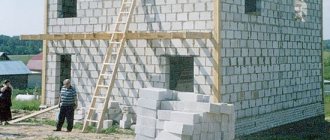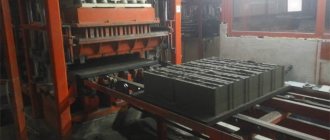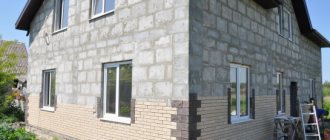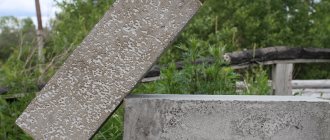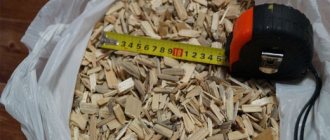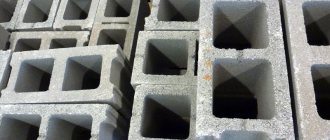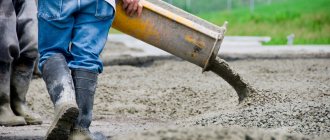It is recommended to carefully study the pros and cons of a building material such as polystyrene concrete before purchasing it. The quality of products must be examined according to external data, cross-section and the attached documents. To avoid regrets in the future for choosing polystyrene concrete, you should read reviews from specialists and private builders. The rest of the article will describe what polystyrene polystyrene concrete blocks are used for, their pros and cons.
What are the main properties of polystyrene concrete products? The material has thermal insulation properties, which are determined by polystyrene beads and the cement-sand component is responsible for their structural properties.
In what cases do we choose polystyrene concrete for construction?
Having studied the characteristics of the pros and cons of polystyrene concrete material, you can begin construction work. Areas of application:
- During the construction of multi-storey buildings. Light blocks help reduce the load on the foundation, and accordingly the level of shrinkage decreases. The installation process is simplified due to the size of the blocks.
- In the construction of a private house, cottage. Using polystyrene concrete panels, durable and aesthetically attractive structures are created.
- Thermal insulation and sound insulation of buildings and premises.
- Lightweight concrete material allows you to build superstructures of additional floors from it without creating a load on the foundation part.
- Polystyrene concrete is suitable for restoration of buildings.
- Used in shipbuilding to construct floors with an inclined layer. The stability qualities allow the material to withstand linear loads and serve for a long time without any defects.
Do not use blocks of dubious, handicraft production. Poor quality building materials can lead to significant problems that will be difficult to correct.
Approximate calculation of the cost of erecting walls
When choosing aerated concrete or polystyrene concrete, it would be reasonable to compare the cost of building walls when using each material.
First, using aerated concrete as an example, let’s calculate the required amount of block:
- To do this, you will need to find out the area of the walls and one block. Let's assume that we will build a house measuring 18*20 meters. The perimeter is: 18*2+20*2=76 m2.
- We consider the area of the block to be 625*400*250, which, in accordance with GOST, is suitable for erecting a wall in one row: 0.625*0.4=0.25.
- Let's find out the number of blocks in pieces: 76/0.25= 304 pieces.
- To find out the quantity in m3, we make the following calculations: 1m3/per volume of one block (0.625*0.4*0.25=0.0625 m3) = 16 pieces of blocks per 1 m3. 304/16=19 cubes will be needed for the construction of the proposed house.
For polystyrene concrete, the value will be approximately the same, taking into account slightly different dimensions from aerated concrete.
The calculation for constructing a building made of aerated concrete will look like this:
- The cost of 1 m3 of aerated concrete block varies from 2900 to 3500 rubles. Let's take the average value of 3,200 rubles. 19 m3*3200=60800 we need.
- The price does not include delivery and a possible deposit for returnable containers (pallets).
The price per cube of polystyrene concrete blocks is about 3,100 rubles. 19*3100=58900.
Note! When choosing a material, be sure to consider the cost of delivery and unloading of products. Since these services are quite expensive and can significantly affect the final price.
The cost of services for the construction of walls from both materials will be approximately the same.
Laying aerated concrete, photo
Polystyrene concrete for walls, instructions
Advantages
- Polystyrene concrete products are the most affordable insulation materials among similar products. There is no need for additional insulation with polystyrene foam and mineral wool.
- The blocks have low thermal conductivity, which will significantly reduce costs during the heating season. Thanks to the minimal seams that are formed during installation, reliable sound and thermal insulation is ensured. According to consumer reviews, the noise insulation of polystyrene concrete is indicated for a wall thickness of 100 mm and the penetration of sounds is no more than 37 dB. Typically, an adhesive composition intended for foam concrete products and ceramic tiles is used.
- The building material can be used as an independent structural material that does not require insulation.
- If you prepare a polystyrene concrete mixture yourself, then the advantages will be the ease of mixing and low material consumption, which will reduce the need for a solution by approximately 70%.
- The installation process will not be difficult due to the massiveness and lightness of the products, since one block weighs 22 kg with dimensions equal to 17 bricks. This positive quality will allow you to easily transport and unload building materials at a construction site.
- Increased resistance to aggressive environmental conditions. The material is not afraid of moisture, frost, mold, mildew, or high temperatures.
- Polystyrene concrete has advantages that increase the service life of products to 100 years. The material is used in a wide range of applications.
- The products are environmentally, sanitary and hygienic safe.
- The surface of the material is easy to process without difficulty during external and internal finishing work.
Types of products, prices
To perform various construction tasks, solid blocks, hollow U-shaped blocks (for prefabricated monolithic structures - reinforced belts and mauerlats), additional elements, and lintels are produced. The most popular size of wall products is 600 × 300/400 × 200/300 mm, weight - 19.8/39.6 kg (grade 550), so construction progresses quickly, masonry does not require serious labor costs, and it itself does not affect high pressure on the foundation (the weight of 1 m² of wall with the thickness of the mentioned blocks will be 135 and 223 kg, respectively).
If it is necessary to make a superstructure on a house, and the calculated safety margin of the foundation is small, masonry made of polystyrene concrete may be a way out. The “lightness” of this material often makes it possible to do without reinforcing the supporting base.
Thanks to their precise geometry, the blocks can be laid not on mortar, but on a special adhesive mixture with a seam thickness of only 3–5 mm (the thinnest mesh is used for reinforcement), which increases the thermal insulation properties of the structure, eliminating the appearance of cold bridges in it. Consumption of the composition is 0.03 m³ per cubic meter of masonry. The estimated cost of ordinary products is 2750–3800 rubles/m³ depending on the brand, formwork U-shaped blocks are 200–250 rubles/piece.
Flaws
The disadvantages of polystyrene concrete arise due to the fact that the structure of the blocks includes a cement-sand component. Expanded polystyrene concrete blocks have pros and cons:
- Insufficient strength of installation of fasteners. For example, in order to install dowels and anchors, you will need to pre-fill concrete mortar of at least M 150 grade into the areas of planned use. Otherwise, a dowel or self-tapping screw embedded in the surface can be pulled out without any problems by hand. For polystyrene concrete, special longer dowels and anchors are sold.
- Low density indicators make it difficult to install windows and doors, as a result of which, during operation, the material leads and the fittings sag. For example, products that are not properly installed in walls made of polystyrene concrete blocks become loose after a while with frequent use.
- When the blocks contain a low content of polystyrene granules, this means that the main properties in the product will not be polystyrene, but the concrete component. If the balls have low adhesion to the concrete part. Accordingly, the elements will be poorly connected to each other and will fall out on chips. The strength of such products will be low. For this reason, manufacturers should be asked to present quality certificates.
- Polystyrene concrete needs to be plastered both inside and outside, and reviews from owners say that this material has low adhesion to plaster and requires additional treatment of wall surfaces. The recommended thickness of the plaster layer is 1.5 cm outside and at least 2 cm inside the premises.
- Structures built from polystyrene concrete mixtures have high shrinkage rates - 3 times higher than those of aerated concrete and foam concrete structures - 1 millimeter per 1 m2.
- The material is not resistant to changes in high temperatures, fire resistance is low. There is also no resistance to organic solvents - gasoline or acetone will contribute to destruction and loss of properties of the products themselves.
- Polystyrene concrete elements are included in group G1 for flammability, which means that they are not flammable and do not have fire resistance. When exposed to high temperatures, the following happens: polystyrene granules begin to collapse and lose their thermal insulation properties, and the concrete frame prevents the block from completely collapsing, thereby losing its thermal insulation and strength qualities. Reviews from owners and professionals recommend taking all kinds of fire safety measures. Namely, to cover polystyrene concrete surfaces with non-combustible materials and apply a layer of plaster on them.
- Negative reviews indicate the following: manufacturers indicate the number of 100 permissible frosts. In fact, after 20 such impacts, when polystyrene concrete gets wet, and then freezes and melts, this will greatly affect the strength of the material, which will begin to collapse. The solution to the problem is to insulate the outside or apply a layer of plaster and then paint.
- The properties of low vapor permeability place this building material in last place in comparison with aerated concrete or foam concrete blocks. In a room built from polystyrene concrete, a certain microclimate and humidity arise. Accordingly, the walls do not breathe, and vapor permeability will not replace ventilation. Craftsmen recommend that ventilation shafts be provided in advance to reduce excess moisture in the air and to normalize the microclimate. If multi-layer walls are built, there is a risk of water vapor condensation appearing between the layers under operating conditions when weather conditions change.
It is allowed to produce polystyrene concrete at home. To do this you will need water, a binder and filler.
Main characteristics
An undoubted advantage is the reduced vapor permeability of the material.
GOST regulations determine the physical and mechanical properties of a piece product:
- Density 150-800 kg/m3;
- Frost resistance up to 150 freeze/thaw cycles;
- Compressive strength M5-M35;
- Energy saving coefficient (thermal conductivity) 0.055 W/mS – 0.145 W/mS;
- Flammability - group G1 (low-flammability materials).
The assumption that the blocks meet high qualities and characteristics is not entirely true due to their low compressive strength. Average parameters are not shown for the construction of high-rise buildings, so the maximum product is two-story residential and commercial buildings.
An undoubted advantage is the reduced vapor permeability of the material: it practically does not absorb water, having extreme resistance to temperature fluctuations and transitions through zero degrees. But as for environmental friendliness, you need to rely on hygiene certificates issued by laboratories - researchers confirm the safety of the product for humans.
The density of the material is the main determining factor in the area of application of the product. There are three groups:
- Blocks for external cladding of buildings and construction of non-load-bearing internal walls. Weight 150-300kg/m3;
- The blocks are structural and thermal insulation, density 350-500 kg/m3. Used for arranging internal walls with a load-bearing load;
- Structural blocks with a density of 500 kg/m3. Indicated for the construction of external load-bearing wall panels.
According to available data, we can say that the material is not much different from other piece construction products and, with the right selection, can become a good alternative for the construction of one- and two-story private residential buildings.
Reviews from specialists and developers
A building material such as polystyrene concrete has excellent thermal insulation qualities; expert reviews indicate that buildings built using this method in the Siberian region are able to retain heat without additional installation of insulating materials.
A house built from polystyrene concrete looks beautiful; various architectural and design projects can be built from the blocks.
If you compare concrete masonry with brick, the polystyrene concrete option is half the price. Polystyrene concrete blocks intended for walls, according to reviews from experienced builders, should be at least 37.5 cm, with such a thickness no additional thermal insulation material will be required.
Polystyrene concrete is sold in 50 kg bags, consumer reviews - when the product is packaged in packages, this is convenient when calculating the required amount of building material.
The main disadvantage for the consumer is the increased fragility of polystyrene concrete products when there is a need to install various household units. For this option, reinforced rods should be laid along the entire length of the partition.
Polystyrene concrete blocks are lightweight concrete; positive consumer reviews indicate practicality and ease of installation work. Multi-storey buildings, private houses, and various utility buildings are erected from such building materials. With the right choice, polystyrene concrete structures will last for decades.
Tips for choosing building materials:
- Before purchasing a product, it is recommended to pay attention to the manufacturer, which must have a quality certificate.
- If possible, visit and evaluate a finished building made of similar material.
- Products should not have unnecessary voids. When cut, granules should be visible in large quantities.
- When connecting polystyrene concrete blocks to each other, there should not be large gaps. Dimensions and cuts must be the same and even.
- The weight of the product and its density must meet all requirements. On the other hand, if the weight is small, this indicates low strength, and if the weight is too high, the composition includes a large amount of excess cement mortar.
Price category
Polystyrene concrete has an attractive price compared to other building materials made from cellular concrete.
PSB price per cubic meter:
| Brand PSB block | Price per 1 m3 |
| D-400 | 3790 rub. |
| D-500 | 4090 rub. |
| D-600 | 4390 rub. |
The price of polystyrene concrete blocks depends mainly on the size and quality of the granules and the brand of cement
Price per block of polystyrene concrete:
| Block size ( L x W x H ) | Price for 1 piece |
| 588x138x300 mm | 106 rub. |
| 588x92x300 mm | 51 rub. |
| 588x300x380 mm | 282 rub. |
| 588x188x300 mm | 139 rub. |
Polystyrene filler has the following price per cubic meter:
| Size (diameter) of granules | Price |
| 5-7 mm | 1300 rub. |
| 4-6 mm | 1800 rub. |
| 2-3 mm | 2800 rub. |
Construction Materials
To build a Swedish stove with your own hands, not counting the construction of the pipe, you will need materials and stove fittings in the following quantities:
| No. | Name of materials and fittings | Unit measurements | Quantity |
| 1 | Red kiln brick | Thousand PC. | 0,92 |
| 2 | Fireclay brick | PC. | 215 |
| 3 | Sand | kg | 200 |
| 4 | Oily clay | kg | 250 |
| 5 | Fireclay mortar | kg | 160 |
| 4 | Blower door 14x25 cm | PC. | 1 |
| 6 | Fire door 21x25 cm | PC. | 1 |
| 7 | Cleaning door 7x13 cm | PC. | 3 |
| 8 | Valve for smoke duct 13x26 cm | PC. | 2 |
| 9 | Cooking plate 31x61 cm | PC. | 1 |
| 10 | Grate 25x40 cm | PC. | 1 |
| 11 | Steel strip 50x5 mm | m | 5 |
| 12 | Angle steel 60x60x5 mm | m | 0,8 |
| 13 | Sheet steel 50x70 cm | m² | 0,35 |
How to do it yourself?
Expanded polystyrene concrete blocks can be made independently. First you will need to prepare the following components:
- granulated polystyrene;
- cement;
- sand;
- water;
- additives.
You can't do without equipment. To make blocks you will need:
- shovel;
- concrete mixer;
- buckets;
- forms for filling.
The prepared ingredients for the connection must be placed in a concrete mixer. To make polystyrene foam concrete with your own hands, it is recommended to follow the suggested instructions:
- Strictly observing the proportions, combine polystyrene, additives used to improve the quality of the finished product, and water.
- Place the components in a concrete mixer and mix for 1.5-2 minutes.
- Add cement and stir for another 3-4 minutes to obtain a homogeneous mass.
- Place the finished dough into molds greased with Vaseline or other technical oil.
- Leave the blocks to harden for 25 hours.
- Remove the set product from the mold and let it dry for 1-2 days. in a cool, well-ventilated area.
Areas of application of expanded polystyrene concrete
Polystyrene concrete building blocks for rough masonry vary in size and purpose.
Composite material is used for the manufacture of such masonry and finishing materials;
- ordinary building blocks;
- masonry blocks with a molded (decorative) front side;
- reinforced (reinforced) building products;
- thermal insulation boards;
- finishing panels for facade cladding.
Polystyrene concrete building blocks for rough masonry vary in size and purpose. The building material for the construction of the main walls is made with a density of 500-600 kg/m3 and block sizes of 300x380x588 and 188x300x588. Products for laying internal partitions can have a lower density (from 400 kg/m3) with dimensions of 92x300x588.
Blocks for finishing masonry of an external wall with a textured (decorative) front surface have a density of at least 500 kg/m3 and standard dimensions. With the help of such masonry blocks, a finished facade surface is formed that does not require further finishing. The photo shows a sample of finished masonry made from this building material.
Blocks for finishing masonry of an external wall with a textured (decorative) front surface
Door and window beams, which are produced in lengths of 1.3-4.2 m, are reinforced with steel rods. They simultaneously perform the functions of structural reinforcement and thermal insulation.
Another type of products that are produced on the basis of composite material are panels for external wall cladding. Decorative slabs are available in two versions. Some of them are designed for sheathing walls (ventilated facade), others are designed for installation directly on the surface using mounting adhesive.
Beautiful interior design ideas
Even from a one-room apartment you can make a unique living room, in which there will be a double bed, and your guests will feel very comfortable.
Cover the area above the head of the bed with dark brown plain wallpaper, in the corner of which a sakura branch “blooms.” For furniture, install wardrobes to match the brown wallpaper. A snow-white carpeted floor will lead you from the bed to a white sofa with contrasting brown pillows, above which there is wallpaper (almost white). You can add a little cream color and install the same light coffee tables. Accessorize by adding mirrors above the sofa to make the room appear larger. Opposite the sofa is a dark brown stylish chest of drawers where you can place a TV.
Two zones, light cream and dark brown, will turn your sixteen meters into an elegant room in which you can sit with guests and relax on the bed after a busy day.
All your fantasies and creative impulses (as well as advice from designers) can give you a beautiful and cozy home, allow you to find your own style and be proud of the result.
Briefly about production technology
Polystyrene concrete is a composite material consisting of beads-granules of foamed polymer and cement stone, forming a strong structural lattice. To improve the homogeneity of the material, air-entraining and surface-active chemical additives are used.
By adjusting the ratio of cement and water in the initial mixture (Table 1), it is possible to produce concrete of varying densities.
Table 1 Note* PVG – polystyrene granules
In addition to water and cement, some manufacturers use sand, adding it to the raw materials.
Table 2 (percentage composition of polystyrene concrete with the addition of sand)

